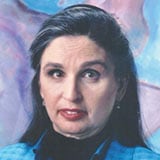About a year ago, I managed to figure out how to buy into Pakistan, notes Vivian Lewis, editor of Global Investing, an international expert willing to accept the very high risks associated with a volatile and speculative emerging market that is far off the radar of most investors.
I called upon a college classmate who is the widow of a Pakistani, a licensed stockbroker, and a former resident of Lahore.
She came up with an ETF from Deutsche Bank based on the MSCI index traded in Hong Kong; I bought XDBMSCI Pakistan (HK: 3106), even though this exotic position has proved to be hard to track, trade, or transfer.
Now, Deutsche Bank has launched a US variant called Global X MSCI Pakistan ETF (PAK), traded right here in the USA.
It is important to add that my hopes for a peace deal between India and Pakistan are no longer high. Another concern is that Pakistan runs on compressed natural gas whose shortages limit factory growth now.
However, the Pakistan economy has a few strong suits despite being feudal, Islamic, military controlled, and backward.
First of all, the country's main port of Karachi will be doubled under a $250 million investment in Gwadar, near the Iranian border, which will be linked by rail with China.
Pakistan is also attracting international loans from the World Bank and support from the International Monetary Fund, and most importantly, remittances from workers off at jobs in the Middle East.
While women are still oppressed, the literacy rate has risen to around 60%. Meanwhile, poverty levels are much improved. Now 17% of Pakistanis are poor by international tallies, compared to 37% seven years ago.
The economy is among the growing—the “next eleven” expected to become engines for global growth—right after the famous BRICs.
Growth has also come from cement and food, particularly Hallal food production for global brands as well as fruits and veggies.
Apart from agriculture and the port, the new Pakistani growth has come from mining, fertilizers, and manufacturing, notably of textiles and apparel made by both foreign companies and fledgling Pakistani ones from homegrown cotton.
By tradition, there is banking and finance. Pakistan also boasts such heralds of modernity as a widespread use of cellular phones from telcos in Egypt, Norway, Singapore, Abu Dhabi, and China, as well as a local former landline firm.
About $10 billion has been invested in telcos by foreign investors, including phone makers as well as cell operators.
Thanks to being so wired up, it boasts freelance IT hands, freelance journalists, a freelance advertising industry, and tourism.
The halving of the value of the Pakistani rupee in the past five years has boosted export competitiveness.
Government liberalization policies have helped free up the employment system and there are even plans to privatize state-owned enterprises.
Subscribe to Global Investing here…
More from MoneyShow.com:


















